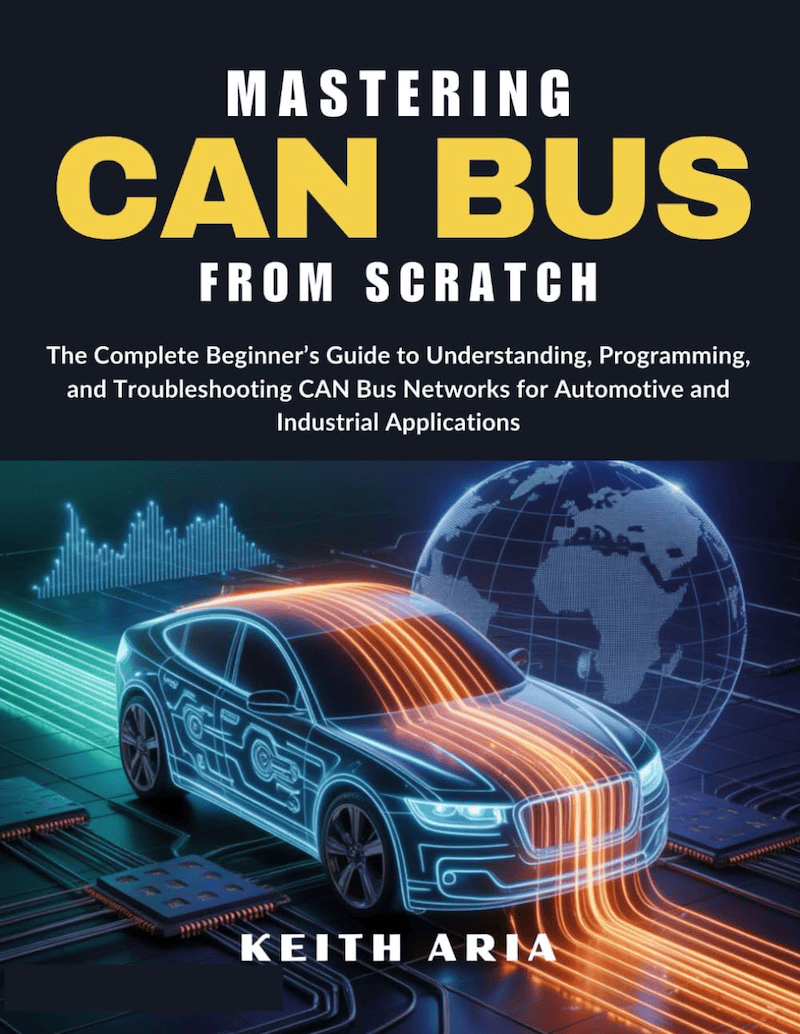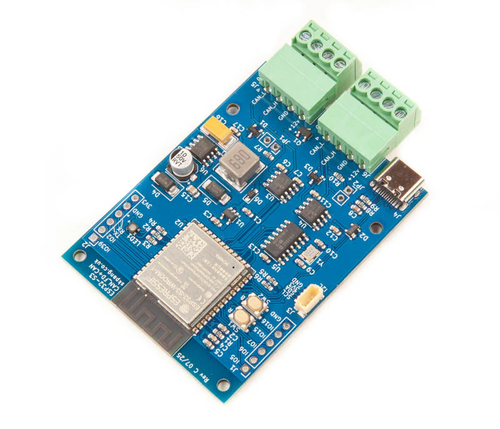Blog
Recent Posts
Mastering CAN Bus: Essential Guide to Understanding and Troubleshooting Vehicle Networks
Posted by on
 In today’s world of connected vehicles and industrial automation, understanding the details of networked communication protocols has become a pivotal skill for engineers and technicians alike. The book Mastering CAN Scratch: Understanding & Troubleshooting (ISBN/ASIN B0G24Z25RZ) steps into this space by offering a comprehensive, hands-on guide to the widely used Controller Area Network (CAN) bus and its associated troubleshooting methodologies. It takes the reader from the fundamentals—what a CAN bus is, how it physically and logically operates, typical wiring and bus architectures—through to more advanced diagnostic techniques including fault isolation, signal integrity issues, node conflicts and data error conditions. What makes it stand out is its “scratch-from-first-principles” approach: rather than assuming prior mastery, the author invites you to build your understanding from the ground up, making it suitable for both newcomers and seasoned professionals looking to refresh or expand their CAN bus troubleshooting toolkit.
In today’s world of connected vehicles and industrial automation, understanding the details of networked communication protocols has become a pivotal skill for engineers and technicians alike. The book Mastering CAN Scratch: Understanding & Troubleshooting (ISBN/ASIN B0G24Z25RZ) steps into this space by offering a comprehensive, hands-on guide to the widely used Controller Area Network (CAN) bus and its associated troubleshooting methodologies. It takes the reader from the fundamentals—what a CAN bus is, how it physically and logically operates, typical wiring and bus architectures—through to more advanced diagnostic techniques including fault isolation, signal integrity issues, node conflicts and data error conditions. What makes it stand out is its “scratch-from-first-principles” approach: rather than assuming prior mastery, the author invites you to build your understanding from the ground up, making it suitable for both newcomers and seasoned professionals looking to refresh or expand their CAN bus troubleshooting toolkit.
What truly elevates the book is its real-world orientation. Rather than purely theoretical descriptions, it includes case studies and practical workflows: how to detect bus conflicts using oscilloscopes, how to interpret error-frames under different fault conditions, how to systematically approach intermittent/cold-start faults and how to modify or validate node firmware settings to eliminate elusive problems. The author also dedicates attention to emerging variants and enhancements of the CAN protocol—so you’re not just learning “old school” classical CAN, but gaining insight into how to troubleshoot modern implementations that may incorporate CAN FD, higher bit-rates, and complex multi-ECU networks. For anyone working in vehicle diagnostics, embedded system design or industrial control networks, this book is a valuable addition to the reference shelf—and, with its clear writing and structured progression, a very practical learning resource. More information...
 ESP32S3 Board with CAN FD and Classical CAN Ports
ESP32S3 Board with CAN FD and Classical CAN Ports
The board is built around the ESP32-S3‑WROOM‑1‑N8R8 module, giving it Wi-Fi, Bluetooth 5 (including LE and mesh) and a dual-core Xtensa® 32-bit LX7 processor up to 240 MHz. It also packs 8 MB of quad-SPI flash and 8 MB of PSRAM, making it capable of fairly heavy embedded workloads. On the connectivity side, this board supports classical CAN (Controller Area Network) via the ESP32-S3’s built-in CAN controller, and extends to CAN FD (Flexible Data-rate) using an external MCP2518FD SPI-based controller plus high-speed CAN transceivers. The board is powered by a 7 V–24 V input through an onboard SMPS with reverse-polarity protection, features a USB-C connector for power and native USB OTG programming/debugging, and includes convenient extras like boot/reset buttons, an I²C expansion port, and an RGB LED for status indication.
From an application standpoint, the board is tailored for scenarios where robust in-vehicle or industrial networking meets wireless/edge processing. Because it supports both classical CAN and CAN FD, it is well-suited for bridging legacy CAN networks with next-generation high-bandwidth CAN FD systems — for instance, automotive diagnostics, industrial automation gateways, or IoT devices that aggregate sensor data via CAN and then upload it wirelessly via Wi-Fi or BLE. The native USB support simplifies programming and debugging compared to boards that require a separate USB-UART chip. In short, it presents a flexible platform for embedded engineers working at the intersection of networked control buses and wireless edge intelligence. More information...
Programming the ESP32: Choosing the Right IDE for Your Workflow
The ESP32 has become one of the most versatile and affordable microcontrollers available today. Whether you’re building IoT devices, automation systems, or experimenting with wireless communication, the ESP32 provides exceptional power and flexibility—dual-core processing, Wi-Fi and Bluetooth connectivity, low-power modes, and robust GPIO capabilities. But before any code can run on an ESP32, developers must decide [...]
Adafruit HUZZAH32 ESP32 Feather Board – WiFi, Bluetooth & Battery Power for IoT Projects
The Adafruit HUZZAH32 Feather Board brings Espressif’s powerful ESP32-WROOM32 module into Adafruit’s popular Feather ecosystem. It offers built-in WiFi and Bluetooth connectivity, dual-core performance, and efficient battery management — making it an excellent choice for Internet of Things (IoT) and embedded applications that demand portability, wireless communication, and reliability. Compact Power for Wireless Projects The HUZZAH32 is [...]
Unlock the Future of Marine Apps with the ESP32-S3 CAN Bus Board with NMEA 2000 Connector
As the marine industry continues to embrace smart technologies, there's a growing demand for powerful, connected, and reliable embedded solutions that can handle everything from engine diagnostics to GPS data aggregation. Whether you're building a marine monitoring system, an onboard data logger, or an intelligent control unit, you need a development board that offers high [...]
Exploring the ESP32 Processor and Its CAN Interface Programming
The ESP32 processor, developed by Espressif Systems, has rapidly emerged as a favorite among developers and hobbyists alike due to its robust performance, integrated wireless connectivity, and versatility in handling various tasks. Among its many features is a built-in CAN (Controller Area Network) interface—technically implemented as a TWAI (Two-Wire Automotive Interface) controller—that has opened up [...]
The Teensy Series of Processor Modules: A Versatile Platform for Embedded Systems
The Teensy series of processor modules is a family of compact, high-performance microcontroller boards developed by PJRC. These boards are widely recognized for their small form factor, powerful processing capabilities, and extensive I/O support, making them an ideal choice for a variety of embedded systems applications, including robotics, audio processing, and IoT (Internet of Things) [...]
Micro CANopen Libraries for Embedded CANopen and CANopen FD
Embedded Systems Academy (EmSA) announced the release of its Micro CANopen libraries as Open-CMSIS-Pack compliant with the Common Microcontroller Software Interface Standard (CMSIS) by ARM. The release simplifies CANopen implementation in embedded systems. Previously, the Micro CANopen libraries were part of selected NXP MCUXpresso software development kits (SDKs). Along with NXP's recent support release for MS [...]
Arduino Uno R4 Combines CAN Bus Port with IoT Capabilities
The Arduino UNO R4 WiFi combines the RA4M1 microprocessor from Renesas with the ESP32-S3 from Espressif, forming an all-in-one tool for engineers with improved processing power and a diverse array of new peripherals. With built-in Wi-Fi and Bluetooth abilities, the UNO R4 WiFi allows makers to launch into unlimited innovative opportunities. Likewise, this universal board boasts a [...]
IoT Gateway Powered By Intel Apollo Lake Atom Series Enables Seamless And Secure Data Flow To The Cloud
iBASE, a manufacturer of embedded Internet-of-Things (IoT) products, announced the release of its AGS100T and AGS102T IoT gateways. Powered by Intel’s Apollo Lake Atom x7/x5 series, PentiumN4200, and Celeron N3350 SoCs, the systems facilitate secure data-flow to the cloud for IoT applications with enterprise-grade security and management abilities.The AGS100T/AGS102T fanless platforms feature an operating temperature range of up [...]
NXP i.MX8X System-on-Module (SoC) With Up To Three CAN FD Ports
Compulab (Israel) introduced their CL-SOM-iMX8X System-on-Module (SoM) whose processor is part of NXP’s i.MX8X System-on-Chip (SoC) family and provides three CAN FD ports. The module has been created with the vast I/O capabilities of the i.MX8X SoC in mind. Besides the three CAN FD ports, other peripheral interfaces include PCI Express, dual 1-Gbit/s Ethernet, USB ports, four UARTs, [...]
 Loading... Please wait...
Loading... Please wait...
